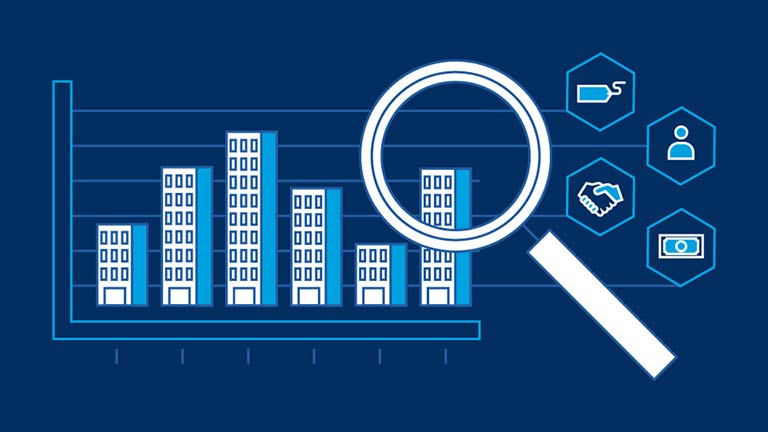Complete Guide: Setting Up Your Business Finances for the First Time

This article is a guest post from Gusto, the people platform for payroll, benefits, and more. If you'd like to learn more about how Gusto and Salesforce work together, here's a great place to start.
Setting up your business finances is a crucial part of setting your business up for success—but if you don’t know where to start, the process can feel confusing, frustrating, and downright overwhelming.
But it doesn’t have to be. Let’s break down all the steps you’ll need to take as a new business owner when setting up your business finances for the first time:
How to create your startup budget
Before you dive too deep into setting up your business finances, you need to know what kind of finances you need on hand to keep your business moving forward.
Or, in other words, you need to create a startup budget.
Think of your startup budget as a financial roadmap; it lays out where you are, where you want your business to go, and, from a financial perspective, how to get there.
Set your total budget.
Estimate your losses.
Tighten and pad your budget.
How to set up your business bank accounts
As a business owner, it’s super important to keep your business finances separate from your personal finances—and that means getting set up with a business bank account.
Head to your local bank or credit union and open a business checking account. It doesn’t matter if you just started your business and don’t have any revenue; the earlier on in the process you open your business bank account, the easier it is to keep your business finances separate from your personal finances.
- You should only use your business checking account for specific business activities, including:
- Depositing business income
- Processing business expenses
- Making payments to any other business accounts (including a business loan or business credit card)
- Paying yourself
Once you have your business checking account set up, you should also plan to open up two additional accounts: a general savings account (which allows you to save for large business purchases) and a tax savings account (which allows you to set money aside for taxes). While you can dip into your general savings account at your own discretion (it’s your savings, after all!), when it comes to your tax savings account, make sure to leave that money alone until tax day; the last thing you want is to find yourself short on funds when your taxes are due (there are few situations more challenging, time-consuming, and expensive for business owners than tax issues).
The last account you’ll want to tackle—if you decide to tackle it at all—is a business credit card. Business credit cards can be helpful for certain businesses—but they can also be detrimental to others, especially if they get you into debt you can’t repay. Before you decide to open a business credit card, make sure to really examine your relationship with credit, whether you can responsibly manage a business credit card, and whether it’s even necessary to start, run, and grow your business.
For more information on how to get banking set up for your small business, check out this guide on how to set up your business bank accounts *(and keep your business and personal finances separate in the process!) from Gusto.
Bookkeeping basics
It’s extremely important for all businesses to keep accurate and thorough financial records. You need to track every dollar that comes in or out of your business—and where every dollar came from or went.
That’s where bookkeeping comes in. Bookkeeping is the process of organizing, managing, and recording all the financial transactions in your business, including sales, deposits, purchases, bill payments, tax payments, and owner’s distributions. For each transaction, you’ll need to track:
- The date of the transaction
- The amount
- The payer or payee
- The income or expense category
There are plenty of different ways to manage your books. During the early stages of their business, many business owners keep things simple and track their income and expenses on a spreadsheet—then, as their business grows (and there are more transactions to keep track of), they upgrade to a bookkeeping software that syncs with their business bank account and automatically tracks and categorizes every transaction.
Accurate bookkeeping not only helps you get a clearer picture of your income and expenses (which can help you make better financial decisions and more accurate budgets), but having accurate financial records is also a must when it comes time to file your taxes.
Want a more in-depth look at how to get started with bookkeeping? Check out Gusto’s guide on the bookkeeping basics *you need to know to start your business.
Finding a financial advisor
There are a lot of financial decisions to make when you’re starting a business—and sometimes, you’ll want the support of a financial professional in making those decisions.
When it comes to choosing a financial pro to support your business, you have options. Depending on your needs, you might hire a Certified Public Accountant (CPA); a tax preparer; a bookkeeper; a financial planner; or any combination of these pros to help you better manage your business finances. Determine what your needs are, research financial professionals that might be able to fulfill those needs, and interview pros until you find the pro (or pros) that fit the bill.
For a more in-depth look at the different types of financial professionals, how they can support your business, and how to find the right pros for you, check out Gusto’s guide to financial pros.
How to make an ongoing operating budget
Your operating budget should include:
Sales: What are your sales projections?
Costs: What costs will you incur related to selling your products and/or services?
Operating expenses: What are the fixed and variable expenses you incur in running your business?
Once you’ve drafted your operating budget, you can look for opportunities to cut costs or expenses and save capital (for example, you might cut back on variable expenses or explore using a more affordable manufacturer to create your products). You’ll want to pad your operating budget to account for any unexpected operating expenses (just like you did with your startup budget).
Then, as you operate your business, you can see how your actual sales and operating costs and expenses compare to your operating budget—and adjust as necessary.
Still have questions on operating budgets? Check out Gusto’s in-depth guide on how to create an operating budget*, complete with an operating budget template to help you get started.
How to set up payroll
If you’re going to hire a team, you’ll need to have a payroll system in place to ensure everyone gets paid accurately, on-time, and that your payment process is fully compliant with any applicable local, state, and federal laws.
Before you can run payroll for the first time, you’ll need to apply for an Employer Identification Number, or EIN, from the IRS, which you’ll use to report your taxes. (Depending on where you live, you may also need to register for an additional state and/or local tax identification number.)
Once you have your EIN, you’ll need to collect all the necessary payroll information from your employees (including their full name, date of birth, address, and social security number or EIN), categorize them as an employee or independent contractor, and have them fill out Form I-9 (which verifies their employment eligibility) and Form W-4 (for employees) or Form W-9 (for independent contractors).
From there, all that’s left to do is determine your pay periods (for example, are you going to pay your employees weekly or bi-weekly?), pick a payroll system, and voila!
You’re ready to run payroll for the first time. Looking for a more in-depth guide on getting started with payroll? Check out Gusto’s step-by-step guide on how to set up payroll for the first time*.
Cash flow forecasting and planning for the future
Part of setting up your business finances is planning for the future.
Cash flow forecasting is a process that allows you to create projections for the financial future of your business. Basically, cash flow forecasting allows you to experiment with different scenarios to see the financial impact they’d have on your business—which is information you can use to guide your business decisions and ensure you’re setting yourself up for future financial success.
When creating cash flow forecasts, you can leverage financial information you already have about your business (like your average revenue, cost of goods sold, and payroll and operating expenses) to see how your business would navigate a variety of financial scenarios in the future.
For example, what would happen to your business if your sales decreased by 25%? Do you have room in your budget to hire new employees—and, if so, when? At what point will you be able to take a substantial distribution from your business?
These are all questions you can explore using cash flow forecasting—and while forecasts are just financial projections (and not financial facts), they can help you plan for the future and make the best financial decisions for your business.
For more on cash flow forecasts—and how to use them to plan your business’ future—make sure to check out Gusto’s guide on making business projections using cash flow forecasting.
Get out there, set up your business finances, and get your business off the ground

Article
The Complete Guide to Channel Sales

Article
How to Attract Customers to Your Small Business

Article
The Recipe for Writing a Winning Business Plan

Guide
The Beginner’s Guide to Starting a Small Business

Article
6 Business Metrics That Matter For SMBs

Article
Small Businesses Need Accountants and Bookkeepers to Succeed

